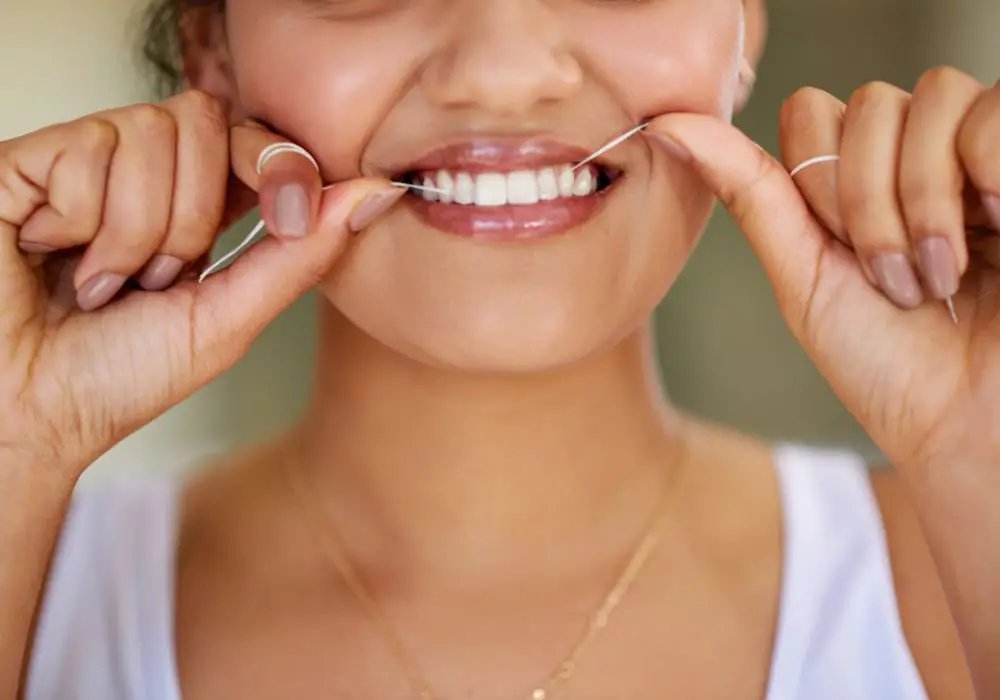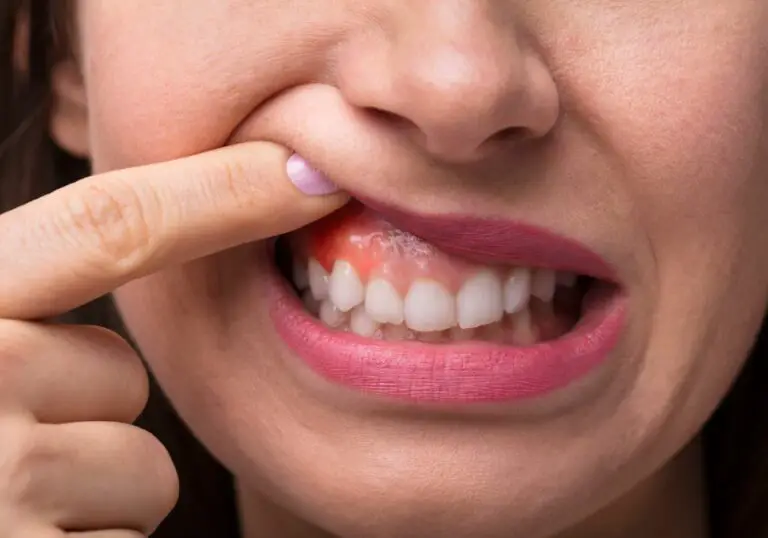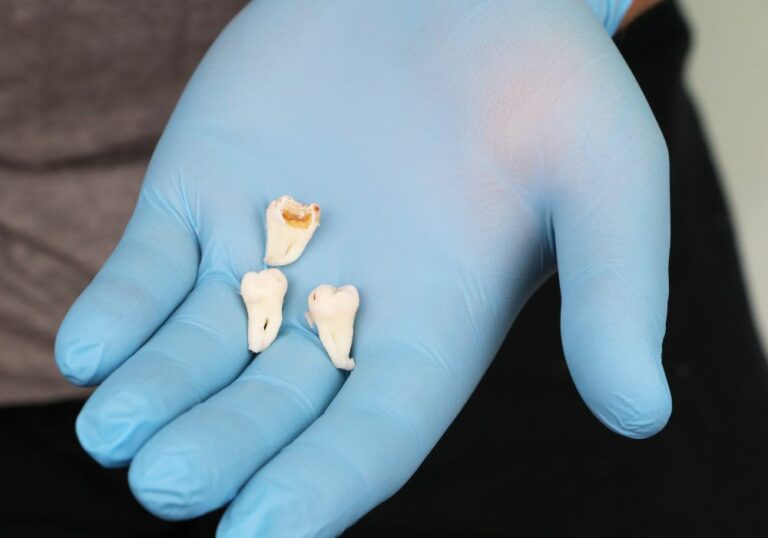Having straight, properly aligned teeth provides more than just an attractive smile. Well-aligned teeth make it easier to keep your mouth clean and healthy. They also reduce wear on the enamel that can lead to micro-fractures, chips and breaks over time. Misaligned teeth put stress on the jaw joints and muscles used for chewing. This can result in pain, headaches or jaw problems like temporomandibular joint disorder (TMJ or TMD). Fortunately, there are several effective options for straightening crooked, crowded or gapped teeth.
What causes misaligned teeth?

Teeth that develop in an irregular position are referred to as malocclusion. This is generally caused by one or more of the following factors:
Genetics
Some people inherit teeth and jaw sizes or growth patterns that increase risk for crooked, crowded or widely spaced teeth. Certain ethnic groups tend to have greater tooth size and arch length discrepancies. Studies show genetics play a substantial role, with risk increasing between close biological relatives. However, genes only influence potential – environmental factors determine actual alignment.
Loss of baby teeth too soon
When children lose baby teeth prematurely, surrounding teeth may shift position to fill the empty space. Early loss of molars allows late erupting teeth to come in out of alignment. Premature loss can occur from dental decay, injuries, gum disease or overcrowding. Children should keep baby teeth until the permanent successors are nearly ready to erupt.
Overcrowding
More teeth than space in the jaws due to inheriting large teeth or small jaws leads to crowding and turning of teeth. Overcrowding is a frequent reason for braces, especially in smaller jaws. Some studies suggest lower jaw growth may be restricted by enlarged adenoids or allergies contributing to this problem.
Physical trauma
Injuries to the mouth and jaw can fracture the underlying bone or displace erupting permanent teeth from their proper path. Trauma from sports, falls, accidents or abuse should be evaluated by a dentist to prevent later misalignment.
Habits
Prolonged thumb sucking, tongue thrusting, lip biting and nail biting habits apply abnormal pressure on teeth during development. These childhood habits affect alignment of front teeth and bite relationship which can persist even after the habit stops.
Tongue or lip ties
Restricted frenum tissues under the tongue or upper lip can limit their mobility and affect the position of front teeth. Short lingual or labial frenums should be evaluated by a dentist for their role in dental alignment issues.
Cleft lip and palate
Children born with clefts in the lip and palate region frequently have severe tooth misalignment due to the structural abnormalities and surgical interventions involved. Early orthodontic monitoring and treatment is critical.
Signs that your teeth are misaligned
Look for these common indicators of poor tooth alignment:
- Crooked teeth – Teeth appear twisted, overlapping or going in different directions
- Gaps or spaces – Visible spaces or gaps between several teeth caused by missing teeth or small jaws
- Protruding teeth – One or more teeth protruding significantly in front of others often due to crowding
- Overbite – Upper front teeth extending excessively over lower front teeth due to genetics, habits or tongue position
- Crossbite – Upper and lower teeth meet in an abnormal relationship with incorrect bite alignment
- Asymmetries – Differences between right and left sides in tooth angulation or jaw position
- Difficulty closing lips – Lips cannot meet smoothly due to protruding teeth
- Cheek or tongue biting – Constant biting of cheek or tongue tissue from abnormal tooth position
- Speech problems – Difficulty pronouncing certain words or a lisp
- Jaw pain – Discomfort or soreness in jaw muscles when chewing
Problems caused by misaligned teeth

Misaligned teeth not only detract from appearance but can lead to oral health issues such as:
Tooth decay and gum disease
- Crooked teeth with overlaps or spaces between them trap food debris increasing plaque buildup and risk of cavities.
- Misalignments also cause some teeth to be harder to clean thoroughly. Food and bacteria gets packed into areas that are difficult to access with a toothbrush. This accelerates decay and gum inflammation.
Enamel wear
- The abnormal pressures of misaligned teeth can cause excessive forces on the enamel coating. This can lead to micro-fractures, chips and excessive wear of the enamel over time.
Bone loss
- When teeth are misaligned, the uneven pressures placed on teeth and gum tissues leads to inflammation. Inflamed gums gradually destroy the underlying bone supporting the teeth. This can cause teeth to loosen or drift out of position more over time.
TMJ/TMD disorders
- Jaw joint pain, clicking, locking, popping and headaches can result from the imbalance in the bite relationship between the upper and lower jaw. Misaligned teeth increase the likelihood of developing temporomandibular joint disorders.
Speech difficulties
- Crooked teeth or poor fit of the bite can affect pronunciation and clarity of speech. Certain sounds are formed with the teeth, lips and tongue contacting precisely. Misaligned teeth cause speech impairment.
Tooth damage
- Misaligned teeth with a poor bite lead to uneven abnormal wearing of the tooth surfaces during chewing over time. Chipped or fractured teeth are also more likely when the bite is not stable.
Digestive problems
- Improperly aligned teeth affect chewing ability and breakdown of foods. This can contribute to gastrointestinal upset and problems with digestion.
Excessive tooth wear
- In addition to enamel damage, misaligned teeth lead to uneven occlusal forces during mastication. This speeds up wearing down of the biting surfaces over time. This problem worsens if enamel is already compromised.
When is the best time to correct misaligned teeth?

The American Association of Orthodontists recommends all children get evaluated for braces after losing their first molars around age 7. Early treatment while jaw bones are still growing produces faster change with good long-term stability.
Adults can also benefit from orthodontic treatment at any age. However, the process takes longer and may involve temporary anchorage devices to improve results.
The ideal time for correcting misaligned teeth is during two key phases:
Phase 1: Early interceptive treatment
- Ages 6-10 years (or earlier if recommended by orthodontist)
- For minor to moderate problems with incoming permanent teeth
- Shorter treatment time – generally 12-18 months
- Focuses on influencing optimal eruption paths for permanent teeth
- Helps guide growth of jaws
- Creates space for teeth alignment with dental expansion
- Prevents worsening of problems in developing permanent dentition
Phase 2: Full braces & aligners
- Ages 12-14 years (or earlier if orthodontist advises)
- For moderate to severe misalignment issues
- Comprehensive treatment with braces, aligners and supplementary appliances
- Maximum correction achievable once most adult teeth have fully erupted
- Retainers help stabilize final tooth positions
What are the options for fixing misaligned teeth?
Several types of appliances successfully treat poor tooth alignment in children, teens and adults. Choices will depend on the nature and severity of the problem and goals of treatment.
Removable clear aligners
Clear plastic trays or aligners are custom fabricated to fit over upper and lower teeth. They are worn up to 22 hours daily. Each aligner applies light forces to gradually move teeth into better position. New aligners are switched out every 1-2 weeks progressing until desired alignment is achieved.
- Best for: Adults and teens with mild to moderate crowding or spacing issues. Limited ability to rotate or tip teeth.
- Treatment time: Dependent on complexity – averages 12-18 months with diligent wear.
- Considerations: Removable and less visible. Must be worn the prescribed hours daily for effectiveness. May require attachments.
- Cost: $3,500 – $8,000
Metal braces
Brackets are bonded with dental adhesive to the front surface of each tooth. A wire runs through the brackets and is held in place with elastic or metal ties. By tightening the wires at appointments, tension is applied to gradually shift teeth into proper alignment.
- Best for: Moderate to severe crowding or crookedness in teens and adults. Can fully rotate and tip teeth.
- Treatment time: 18-24 months with braces on entire time.
- Considerations: More visible but effective for complex cases. Discomfort initially. Dietary and oral hygiene changes needed.
- Cost: $3,000 – $7,500
Clear ceramic braces
Transparent or tooth colored ceramic brackets with clear wires move teeth same as metal braces but with far less visibility of the appliances. More aesthetically pleasing but not invisible.
- Best for: Teens or appearance conscious adults with mild to moderate alignment issues.
- Treatment time: 18-24 months – same as metal braces.
- Considerations: More costly than metal. Can stain from foods/drinks if poor oral hygiene. Brackets less durable.
- Cost: $4,000 – $8,500
Lingual braces
Custom metal or clear brackets are bonded to the back surfaces of teeth so braces face the tongue side. Allows treatment with nearly invisible alignment. Can be uncomfortable initially.
- Best for: Teens and adults with moderate to severe alignment issues who prioritize discreet braces.
- Treatment time: 18-36 months depending on complexity.
- Considerations: Challenging to adapt to. Can temporarily affect speech and tongue comfort before adjusting.
- Cost: $8,000 – $10,000
In addition to braces, orthodontists may use other appliances:
- Headgear – External straps and bands that redirect the path of erupting back teeth. Worn part of day or night as needed.
- Herbst appliances – Devices affixed to molars to position the lower jaw forward or guide erupting teeth. Worn full-time or part-time as needed.
- Palatal expander– Device to widen the upper jaw with opening of the midline suture. Creates more arch space to resolve crowding.
- Retainers – Custom devices worn after braces treatment to hold corrected tooth positions stable long term. May be removable or fixed/bonded.
What’s involved in getting braces?

The overall process for getting fitted with braces is relatively quick and straightforward:
-
Orthodontic evaluation
- Comprehensive review of bite alignment, dental health, crowding, spacing, etc.
- Photographs, digital scans, x-rays taken to visualize teeth positions.
- Impressions made of the teeth and gums.
-
Custom treatment plan
- If braces are recommended, the orthodontist maps out an individualized plan.
- Appliance choices, expected wearing times and total duration.
- Number of adjustments and appointments during treatment.
- Use of elastics or headgear if needed.
-
Records appointment
- Precise measurements between teeth and precise models made.
- Photographs, scans and x-rays of the mouth are taken. These records are used later to plan out bracket positions and details of the treatment.
-
Bracket placement appointment
- Brackets are carefully bonded with adhesive on the ideal position of each tooth.
- Bands placed if needed on back teeth for anchorages.
- Archwire threaded through brackets/bands and attached with elastic or metal ties.
-
Follow-up appointments
- Every 4-8 weeks, the orthodontist will adjust wires/tension to gradually move teeth into proper alignment.
- Additional devices like headgear or elastics may be given to use at home.
- Progress is tracked with the initial records to monitor improvement at each visit.
-
Debonding
- Once ideal alignment of teeth is achieved, the brackets and bands are removed.
- Teeth are then polished smooth, with only a small amount of adhesive residue.
- Custom retainer(s) are fabricated and fitted based on the final tooth positions.
How much do braces cost?
As an elective treatment, orthodontic work is not covered under many insurance plans. The cost varies substantially based on extent of correction needed and type of braces:
- Metal braces – $3,000 – $7,500
- Ceramic braces – $4,000 – $8,500
- Lingual braces – $8,000 – $10,000
- Clear aligners – $3,500 – $8,000
- Surgical exposure of impacted teeth – $1500 – $5000 per tooth
Many dental insurance plans cover a portion of braces costs, usually between $1,500 – $2,500 overall. Extended payment plans through orthodontic offices or healthcare financing can make braces more affordable.
FSA and HSA accounts can be used to pay for braces. People with very low income may qualify for Medicaid coverage in some states.
Frequently Asked Questions about fixing misaligned teeth
Here are answers to some common questions people have about correcting problems with tooth alignment:
How long will I need to wear braces?
- Braces are usually worn for 12-36 months depending on severity of the problem, growth stage, and appliances needed. More complex cases and adults generally take longer.
- With good compliance, average comprehensive treatment is around 18-24 months.
Can I fix crowding without braces?
- For mild crowding, selective enameloplasty (reshaping specific teeth) may open up enough space. However, moderate or severe crowding usually requires braces to align teeth properly.
At what age should I get braces for my child?
- The ideal age for full braces is during the early-mid teens when most permanent teeth have erupted. However, the American Association of Orthodontists recommends all children have an orthodontic evaluation by age 7 to intercept developing problems early.
Do braces hurt or irritate the mouth?
- Braces may cause mild soreness and irritation for 3-5 days after each adjustment as teeth shift. This is temporary. Over-the-counter pain relievers, orthodontic wax and/or saltwater rinses can relieve discomfort.
- Mouth irritation and ulcers lessen as the tissues toughen up and get used to braces within a couple weeks. It is important not to pick at wires or brackets that feel uncomfortable with fingers/tongue as this prolongs adaptation.
Are clear aligners like Invisalign as effective as braces?
- Clear aligners work very well to correct minor to moderate alignment issues. However, braces are generally better suited for complex cases requiring rotated, tipped or extruded teeth or bite management. The choice depends on the specific orthodontic problem being addressed. An orthodontist can advise which is preferable.
Can I still play sports with braces?
- Protective mouthguards are important for playing contact sports or activities that may impact the face. Sports like football, hockey, basketball and skating carry higher risks of damaging braces and wires.
- Avoid any sports where traumatic or significant facial and mouth injuries are likely. Check with your orthodontist about safety recommendations for certain sports.
How often do I need orthodontic follow-up visits?
- Adjustments are usually needed every 4-8 weeks during active treatment. Emergencies like broken wires or loose brackets need prompt attention so schedule an office visit as soon as possible if those occur before the next regular adjustment.
- Retainers require periodic visits for inspection, adjustments or replacement. Good compliance in wearing retainers is key to avoiding teeth shifting after braces.







